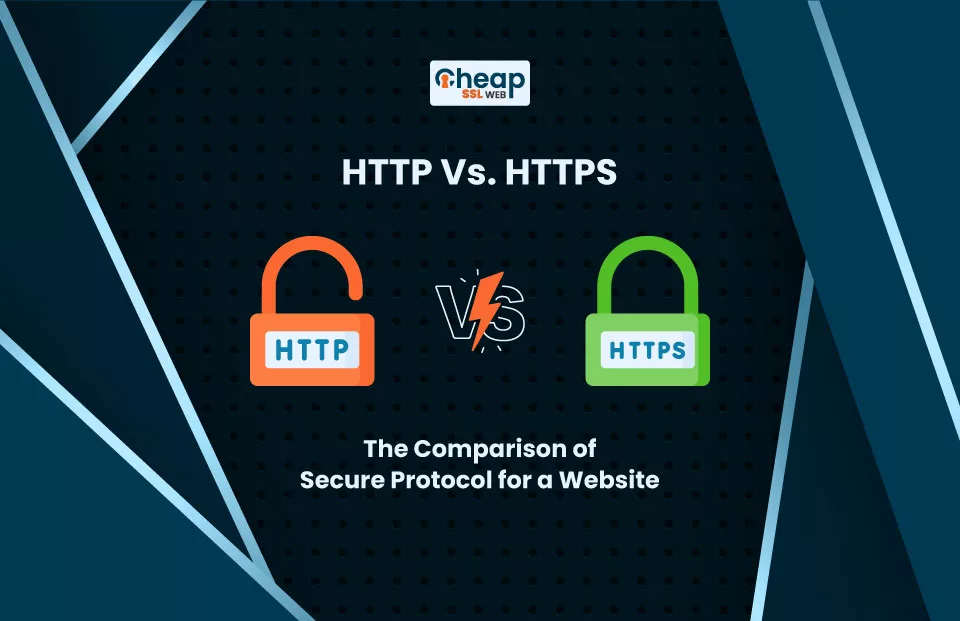HTTP Vs. HTTPS Differences and Performance

The Differences Between HTTP and HTTPS Explained by Vulnerability Expert
When browsing the Internet, some website URLs start with ‘http’ while others begin with ‘https.’ But what’s the difference between http:// and https://, and why does it matter for your website security?
HTTP, or Hypertext Transfer Protocol, is the standard protocol used for transmitting data on the Internet. It’s the foundation of how website pages and other digital content are sent and received. However, it does not include any security measures to protect the data in transit.
To understand HTTP Vs. HTTPS, it is important to understand both protocols.
What is HTTP?
HTTP allows browsers to communicate with websites and servers to retrieve the information users are looking for. Think of it as a messenger that delivers a user’s request for a web page to the website’s server and then brings back the webpage for them to view.
An HTTP request is the first step in communicating with a website or application, like a message in a bottle, sent from the user’s device to a server asking for information, thus allowing them to view pages, upload files, and interact with online services. Think of it like a knock on the door, asking permission to come in and see what’s inside. Without an HTTP request, the Internet as we know it would not exist!
But just like sending a postcard through the mail, the information sent through plain HTTP can be intercepted and read by anyone along the way. That’s where HTTPS comes into play. Moving on to the difference between HTTP and HTTPS, let us understand HTTPS.
What is HTTPS?
HTTPS is an acronym for ‘HTTP Secure’ and adds an extra layer of protection through the use of SSL certificates. These certificates encrypt the data being sent, making it unreadable to anyone who might intercept it.
Think of it like sending a secret message in a locked box. Without HTTPS, that message would be written on a postcard for anyone to read. But with HTTPS, the message is locked away and only accessible to the intended recipient.
So, when the users see that ‘https’ and lock icon in the browser, it’s a sign that the website is taking extra steps to keep their information safe. Not all websites use HTTPS, so users do not continue using it as attackers have it easy to obtain their sensitive information like their credit card numbers or personal details.
Read also about HTTPS vs. SFTP: What’s the Technical Difference?
In the world of cyber security, HTTPS is the armor that protects users’ data from prying eyes and keeps the information safe. But how is it done? SSL (Secure Socket Layer) certificate is the answer.
SSL encrypts HTTP requests and responses by creating a secure, encrypted link between the web server and the user’s browser. This link is established using a process called ‘SSL handshaking,’ in which the browser and the server exchange a series of cryptographic keys to establish a secure connection. Once this connection is established, all data transmitted between the browser and the server is encrypted, making it unreadable to anyone who intercepts the communication. This encryption helps protect confidential data, such as login credentials and financial data, from being intercepted and used by malicious actors.
Differences between HTTP and HTTPS
HTTP and HTTPS may seem like similar beasts, but they’re actually quite different when you get down to the nitty-gritty. So let’s compare and contrast the two protocols to see what sets them apart.
● SSL Certificates
First and foremost, the big difference between HTTP and HTTPS is the ‘S’ at the end. That one little letter represents the entire world of security. HTTPS is built on top of HTTP but adds an extra layer of encryption through SSL certificates. This means that any data sent over HTTPS is encrypted and unreadable to anyone who might intercept it.
● Protocol
In terms of protocol, HTTP is a stateless protocol, meaning that it doesn’t keep track of any information from one request to the next. However, HTTPS, on the other hand, can maintain a secure session between a client and a server. This allows for a more seamless and personalized experience for the user.
● Port Number
The default port number is one of the significant differences between the two protocols. HTTP requests are sent over port 80, whereas HTTPS requests are sent over port 443. This may not seem like a big deal, but it’s an important distinction for network administrators to be aware of.
● SEO Benefits
When it comes to SEO, Google has stated that HTTPS is also one of the ranking factors. Though not a major factor, it is something that can give your website a slight boost in search engine results.
Overall, while HTTP is the backbone of the Internet, HTTPS is the backbone with a security blanket. It may require a bit more setup and maintenance, but the added protection and peace of mind are well worth it.
HTTP or HTTPS: Which One is Secure?
Security is everything when it comes to the Internet. So when it comes to the battle of HTTP vs HTTPS, the latter takes the crown. By encrypting the communication between the browser and the website users are visiting, it protects all sensitive information from prying eyes.
Read also about How to Disable HSTS in Chrome & Firefox?
Get HTTPS-ed
The choice between HTTP Vs HTTPS is clear: HTTPS is the way to go. With its added layer of security and encryption, HTTPS not only protects your website and its visitors, but it also gives your website an SEO boost and improves trust and credibility with users. So go ahead, make the switch to HTTPS and secure your website today.